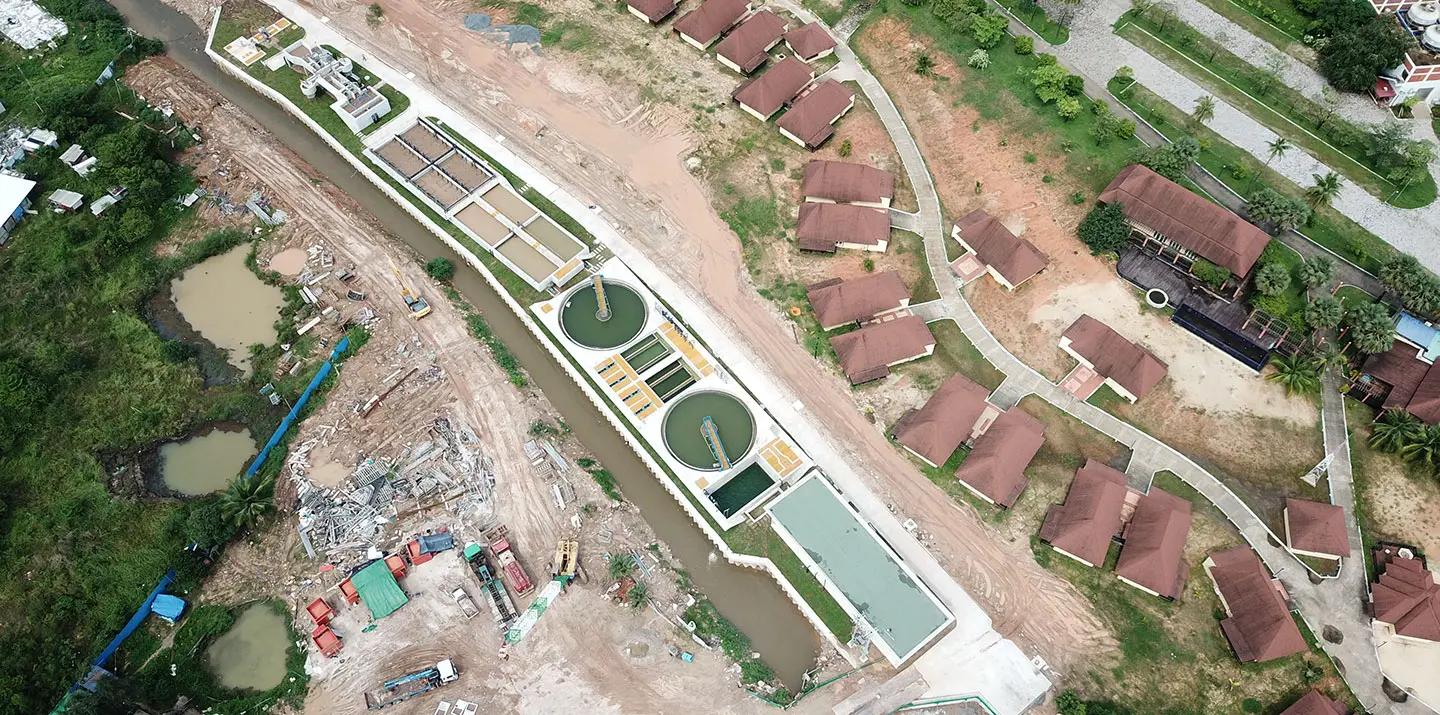
Shortcut nitrogen removal increases the efficiency of treatment, particularly in side-stream applications where nitrogen concentrations are high.
Even with challenges, the process stands to reap rewards in terms of energy savings and lower chemical use
Nitrogen removal is one of the most energy-intensive and chemically demanding parts of wastewater treatment. As utilities and industries look for ways to meet ever-tighter nutrient limits with smaller carbon footprints, shortcut nitrogen removal has emerged as a compelling option. The concept isn’t new — it’s been proven in labs and pilots for decades — but scaling it up reliably has remained a challenge.
At Fluence, that challenge is being tackled head-on through the integration of shortcut processes with membrane aerated biofilm reactor (MABR) technology. The result, known as Nitro, brings a more practical pathway to achieving energy-efficient nitrogen removal at full scale.
Why Shortcut Removal Matters
In conventional biological systems, ammonia is oxidized all the way to nitrate and then reduced to nitrogen gas. Each of those steps requires oxygen and carbon, and both come at an operational cost. Shortcut nitrogen removal simplifies the path: Ammonia is only partially oxidized to nitrite, and nitrite is then directly converted to nitrogen gas. By skipping a step, aeration energy drops, and the need for external carbon sources declines.
The efficiency gains can be striking, especially in side-stream applications where nitrogen concentrations are high, such as treatment of digester centrate. The environmental case is strong, too: Lower energy use translates to lower emissions, and smaller chemical footprints mean less impact downstream.
Integrating Shortcut Nitrogen Removal with MABR
Fluence’s MABR technology has already changed the way biological treatment can be designed and operated. Within a single reactor, a thin biofilm grows on gas-permeable membranes that deliver oxygen directly to the microorganisms. Because oxygen diffuses from the inside of the membrane outward, the inner layers remain aerobic while the outer layers stay anoxic. That natural gradient supports simultaneous nitritation and denitritation, which is at the heart of shortcut nitrogen removal.
The Nitro configuration leverages this balance. By carefully managing oxygen transfer and biofilm behavior, the process encourages ammonia-oxidizing organisms while keeping nitrite-oxidizing bacteria in check. The result is a stable system that converts ammonia to nitrogen gas, with less aeration energy than conventional systems.
What’s particularly appealing is that this happens within a compact footprint. The membrane towers are modular and can be added to existing plants without major reconstruction, making it easier for facilities to move toward more sustainable treatment without starting from scratch.
The Practical Side
Shortcut nitrogen removal isn’t a plug-and-play upgrade. Achieving consistent performance takes time and attention to microbial dynamics. Operators must strike a delicate balance between oxygen levels, biofilm thickness, and the biological community’s composition. Cold temperatures, variable loads, and fluctuations in influent chemistry can all disrupt that balance.
Biofilm systems like MABRs offer some inherent stability advantages. The fixed biomass is less prone to washout and can buffer short-term disturbances better than suspended growth systems. Still, bringing a pilot-proven concept to full-scale operation requires thoughtful engineering, monitoring, and a willingness to adapt as conditions evolve.
The early full-scale applications of Nitro have shown that shortcut removal can perform reliably when supported by proper controls and operator training. As more facilities come online, the industry will gain a clearer picture of how this approach performs under diverse conditions — and where its limits lie.
Important Step Toward Sustainability
Shortcut nitrogen removal represents an important step toward more sustainable wastewater treatment. It aligns with broader trends toward energy neutrality, carbon efficiency, and compact, modular design. While the chemistry is complex, the goal is simple: Doing more with less.
Fluence’s work with Nitro and MABR demonstrates that advanced biofilm systems can make shortcut processes not only feasible but practical. Continued data collection from real-world installations will be crucial to refining the design and verifying long-term stability. But as the technology matures, it’s likely to play a growing role in how the world meets tightening nutrient standards without inflating energy bills or carbon footprints. Contact Fluence for information on how shortcut nitrogen removal can benefit your enterprise.
